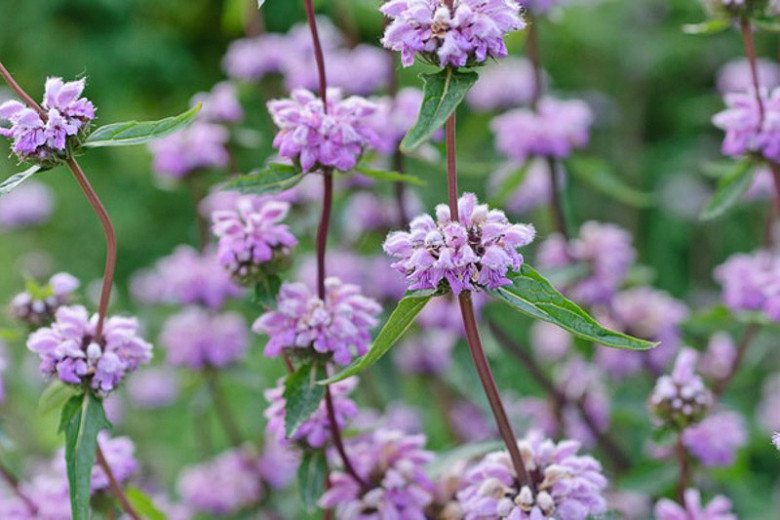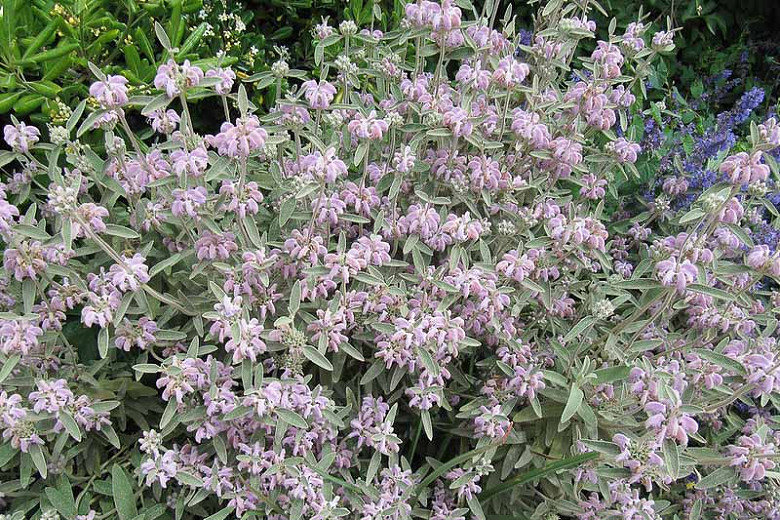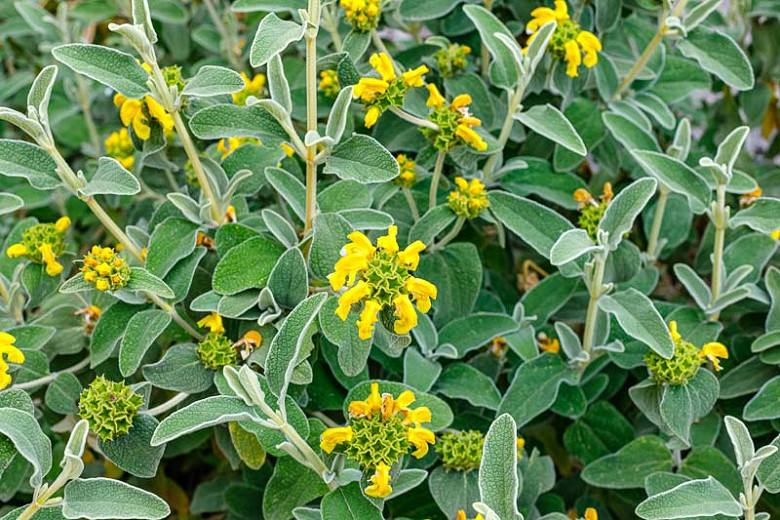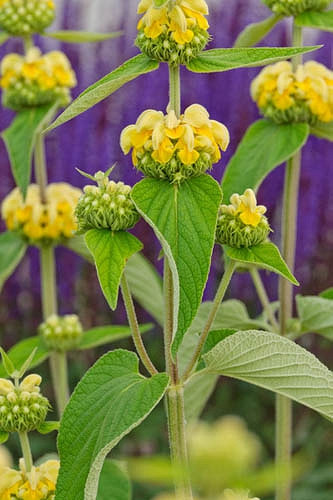Phlomis tuberosa (Jerusalem Sage)
Handsome foliage, architectural blooms! Phlomis tuberosa brings multi-season interest to the garden, making it a valued perennial plant for the gardener.
Phlomis tuberosa, commonly known as Jerusalem Sage, brings multi-season interest to the garden, making it a valued perennial plant for the gardener. It is noted for its distinctive blooms in the form of lavender-pink hooded flower clusters that appear along the upper parts of upright, dark burgundy stems. They rise well above the basal foliage, which consists of a handsome mound, up to 15 in. tall (37 cm), of arrowhead-shaped, rich green leaves. The architectural presence of the blossoms and the evergreen foliage provide a great sight in all seasons.
- Hardy to zones 6 to 9, this Jerusalem Sage blooms profusely from late spring to mid-summer and remains extremely attractive throughout fall and winter thanks to its columns of ornamental seed heads that persist and provide food for the birds. They are particularly striking when covered in hoarfrost or snow.
- Fast-growing, this upright, tuberous-rooted perennial elegantly rises up to 3-5 ft. high (90-150 cm) and spreads 2-3 ft. wide (60-90 cm).
- Combines beautifully in striking color combinations with other blue-flowering perennial plants such as Lavenders, hardy Geraniums, or ornamental grasses. Very useful and adaptable in the garden. Excellent choice for dry sunny borders and meadows.
- Low maintenance and trouble-free, Jerusalem Sage performs best in full sun but tolerates light shade. It thrives in fertile, medium moisture, well-drained soils. Sandy soils with excellent drainage are preferred.
- Taller and more vigorous than the species, Phlomis tuberosa 'Amazone' is the recipient of the prestigious Award of Garden Merit of the Royal Horticultural Society (2012)
- Drought tolerant once established, the sweet nectar of this Jerusalem Sage is attractive to bees and butterflies but is deer-resistant.
- Native to central and southeastern Europe, Asia.
Requirements
| Hardiness | 6 – 9 |
|---|---|
| Heat Zones | 5 – 8 |
| Climate Zones | 1, 2, 3, 4, 5, 6, 7, 8, 9, 10, 11, 12, 13, 14, 15, 16, 17, 18, 19, 20, 21, 22, 23, 24, A1, A2, A3 |
| Plant Type | Perennials |
| Plant Family | Phlomis |
| Exposure | Full Sun, Partial Sun |
| Season of Interest | Spring (Late)Summer (Early,Mid,Late)FallWinter |
| Height | 3' – 5' (90cm – 150cm) |
| Spread | 2' – 3' (60cm – 90cm) |
| Spacing | 24″ – 36″ (60cm – 90cm) |
| Water Needs | Average |
| Maintenance | Low |
| Soil Type | Chalk, Loam, Sand |
| Soil pH | Acid, Alkaline, Neutral |
| Soil Drainage | Moist but Well-Drained, Well-Drained |
| Characteristics | Showy |
| Tolerance | Deer, Drought |
| Attracts | Bees, Birds, Butterflies |
| Garden Uses | Beds and Borders |
| Garden Styles | Informal and Cottage, Mediterranean Garden, Prairie and Meadow |






